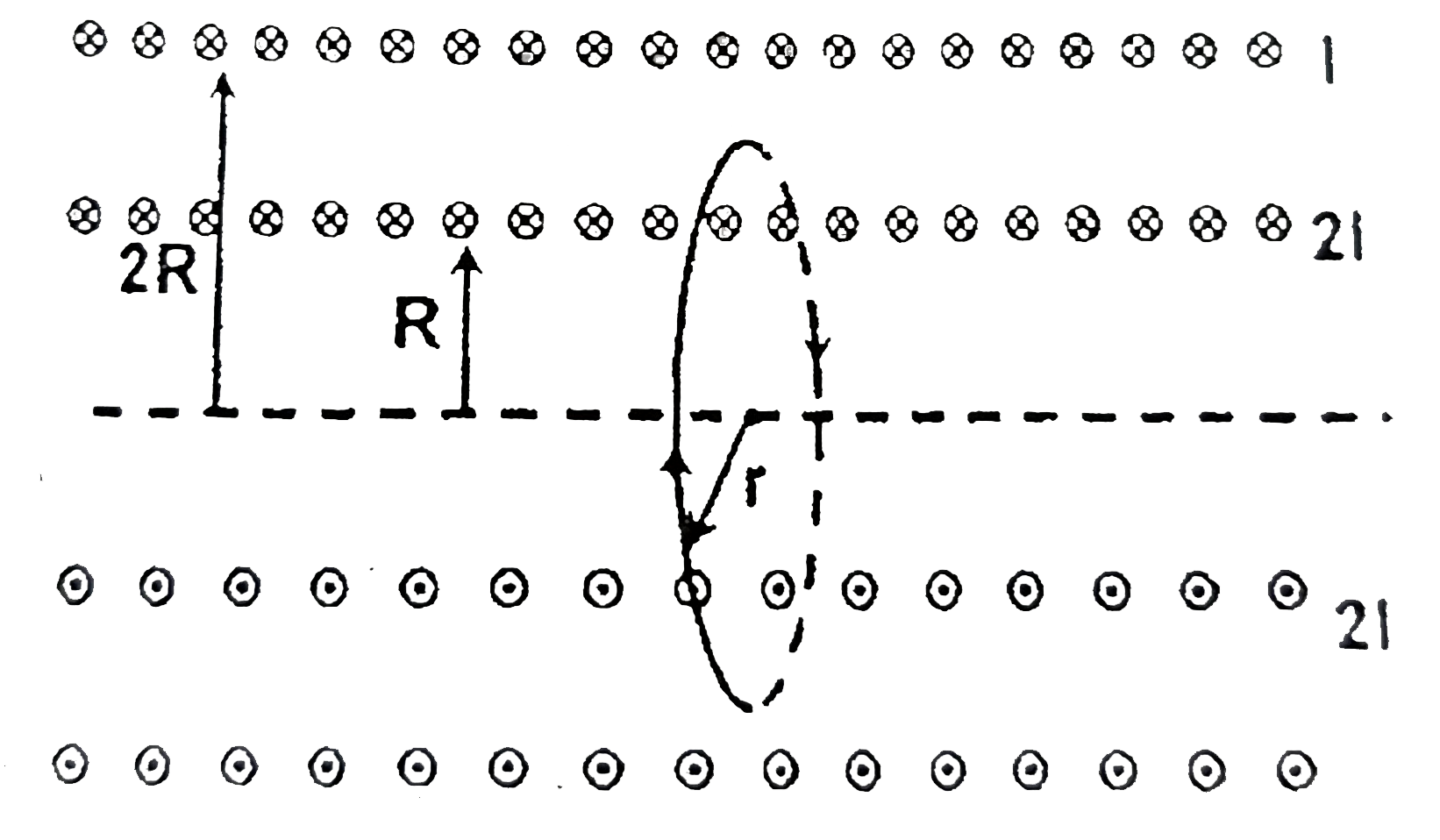A long solenoid of radius 2R contains another coaxial solenoid of radius R. The coils have the same number of turns per unit length and initially both carry zero current. At time, t=0, current start increasing linearly with time in both solenoids. At any moment the current flowing in the inner coil is twice as large as that in the outer one and their directions are same. A charged particle, initially at rest between the two solenoids, start moving along a circular trajectory due to increasing current in the solenoid as shown in the figure What is the radius of the circle ? (Assume magnetic field due to each solenoid remains uniform over its cross-section.)

√2R
√3R
32R
none of these
Current at time t in outer coil is I=kt, and inner coil 2I=2kt
Flux enclosed by particle's trajectory of radius r is ϕ=πR2×2B+π×r2×B=(2R2+r2)πμ0nkt
E×2πr=(2R2+r2)πμ0nk
mv2r=qvB
v=qEmt
Similar Questions
When the current through a solenoid increases at a constant rate, the induced current in the solenoid
View SolutionA long solenoid has a radius a and number of turns per unit length is n. If it carries a current i, then the magnetic field on its axis is directly proportional to
View SolutionTwo coaxial solenoids having same number of turns per unit length n, and radius R and 2R respectively have no current initially. Current in both grows uniformly such that current in the inner one is twice that of the outer one, at any instant of time in the same direction. Current in outer one at time t is Kt then induced electric field at a distance r from axis is (R<r<2R).
View SolutionA long solenoid of 50 cm length having 100 turns carries a current of 2.5A. The magnetic field at centre of solenoid is:
View SolutionTwo coaxil solenoids 1 and 2 of the same length are set so that one is inside the other. The number of turns per unit length are n1 and n2. The current i1 and i2 are flowing in opposite directions. The magnetic field inside the inner coil is zero. This is possible when
View SolutionA solenoid consists of 100 turns of wire and has a length of 10 cm. The magnetic field inside the solenoid when it carries a current of 0.5 A will be :
View SolutionThe number of turns per unit length of a solenoid is 10. If its average radius is 5 cm and it carries a current of 10A, then the ratio of flux densities obtained at the centre and at the end on the axis will be -
View SolutionA conducting ring of radius b is placed coaxially in a long solenoid of radius a (b < a) having n turns per unit length. A current i=i0, cosωt flows through the solenoid. The induced emf in the ring is
View SolutionThere are two long co-axial solenoids of same length l. The inner and other coils have redii r1 and r2 and number of turns per unti length n1 and n2 respectively .The reatio of mutual inductance to the self - inductance of the inner- coil is :
View SolutionThe current flowing in two coaxial coils in the same direction. On increasing the distance the two, the electric current will
View Solution

